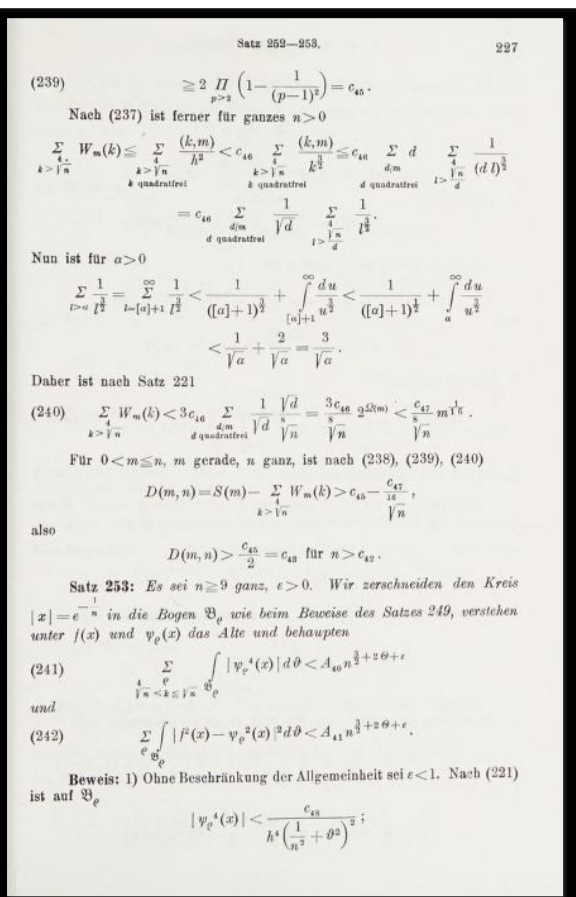I thought of utilizing this lockdown period to study research papers in number theory by myself.
I began reading the research paper By T Estermann ->" On Goldbach Problem : Proof that Almost all Even Positive Integers are sum of two primes". I have read and understood all the proof except one equation and that too due to reason that it uses a equation as a reference from German Book " E Landau, Vorlesungen über Zahlentheorie I ( Liepzig, 1927) . I don't understand German.
I thought of posting this question here in hope that someone must have studied this research paper and also in case a researcher understanding German language wishes to help.
Image of the equation I don't understand ( equation 49 on Page 7 ) ! Equation 49]1
The problem-> 1.I am unable to understand what ( 2|m) means in (49) ?(Notation (2|m) is not used in research paper before) 2.what is the statement of theorem is used to derive (49)? . . Everything except this theorem is Understood in paper.
Images from Original German book->

What i did to resolve the issue -> I tried to find English Edition but couldn't. 2.Then I tried to translate whole pdf book which didn't materalized due to book being a bit long. 3.When I split the pdf I wanted to translate theb it Shows Error 403. 4. I changed the screenshot images( from archive.org) to pdf but again error in translation.
It is my humble request if anybody can tell me meaning of notation (2|m) ?
And it will be very much more helpful if someone tell what is the statement of theorem / result used to derive equation 49.
I shall be really thankful for any help offered.
